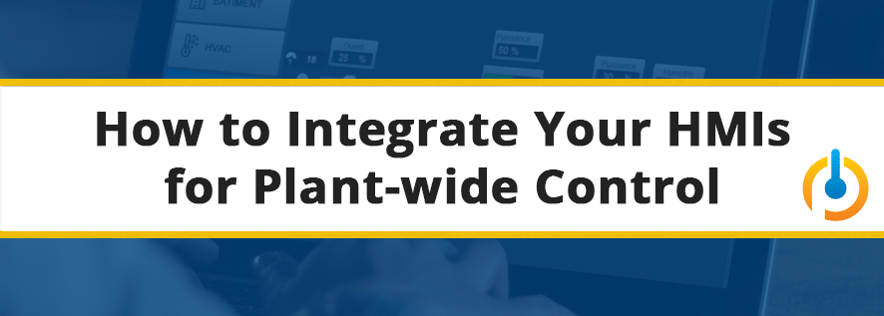
How do you keep up with your processes – walking from machine to machine?
Integrating your HMIs (Human Machine Interfaces) into an Ethernet networked control system gives you a centralized window into your entire process. It works by gathering data from the control system and distributing it to different areas of the facility. One PC at an operator station or in a control room can lay out real-time processes, report data over time, and make live adjustments to day-to-day operation.
HMI Server/Client Configuration breaks down into just two components: Servers and Clients.
Servers
- Establish communication links to the control system
- Contain all data tags, graphics, alarms and historical production data logging
- Applications can be configured with multiple servers managing different data areas of the control system or one server managing all data areas of the networked control system
- Serves/distributes updated information to each client
Client
- Operator interface for viewing and controlling different parts of the control system
- Pulls or accesses feedback data from server and sends operator input data to server
- Application can be configured as multiple clients across the networked control system
- Can be remotely connected to the control network through the internet (Remote Desktop, etc.)
If you have existing PLCs, databases, or servers, HMI Server/Client Configurations can easily be adapted to what you already have. The convenience of being able to monitor all processes and even control your facility with ease from a single screen far outweighs the initial cost, and can be further adapted to do and see more as time goes on.
These configurations are also highly customizable – you choose how many and what tags you want to track, and how you want your data represented. Your system integrator can suggest best practices for the interface or in specifying the industrial PCs or other equipment you might need.
5 Ways HMI Server/Client Configuration Benefits Your Process
- Different areas of a process can be accessed in one central location or several locations across the control network
- Changes made to the process from one client are updated across the network to all other connected clients, indicating process state changes to other operators or plant management
- Can be supplemental to direct-on-machine interfaces
- Arguably more operator friendly than direct-on-machine interfaces
- Useful when client needs to be remotely accessed from a distance to the control network (Ex. The internet)
And finally, you can always rely on your system integrator’s support – remotely. Instead of waiting for someone to travel to your facility, many configurations allow remote login through corporate networks. You can reach support fast whenever necessary, and get back up and running with minimal disruption.
Finding a System Integrator for HMI Server/Client Configuration
System integrators with extensive experience in many different industries and systems are the best equipped to understand your process and identify appropriate automation solutions.
Premier Automation is an engineered solutions company that specializes in providing automation, drive, and electrical control solutions and services to industrial markets. We were named a System Integrator Giant by Control Engineering, ranked #19 nationally on a list of the most innovative intregators in the United States. We work to create a totally integrated automation environment for our customers to ensure better reliability, higher quality, and total production visibility.
If you're seeking a strong system integration partner who will understand your needs, contact Premier Automation to schedule a free on-site evaluation.



